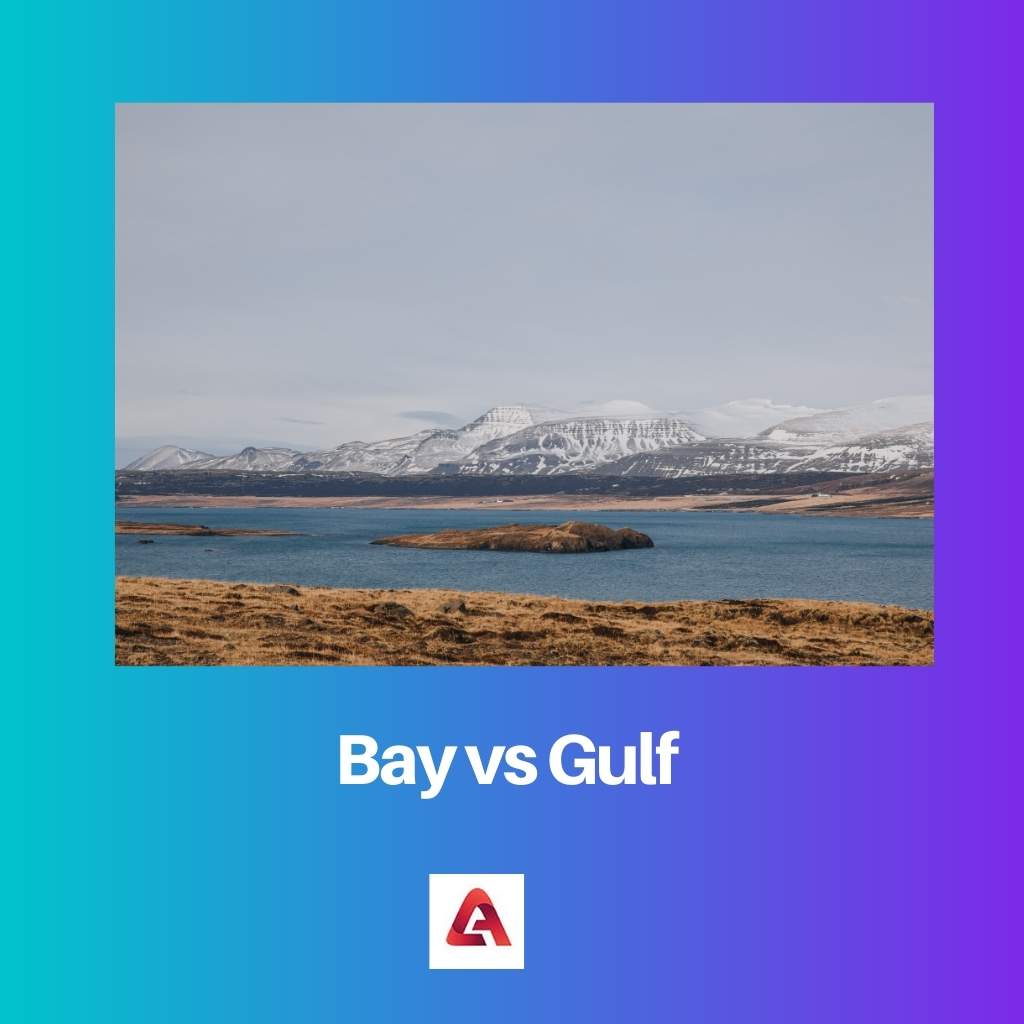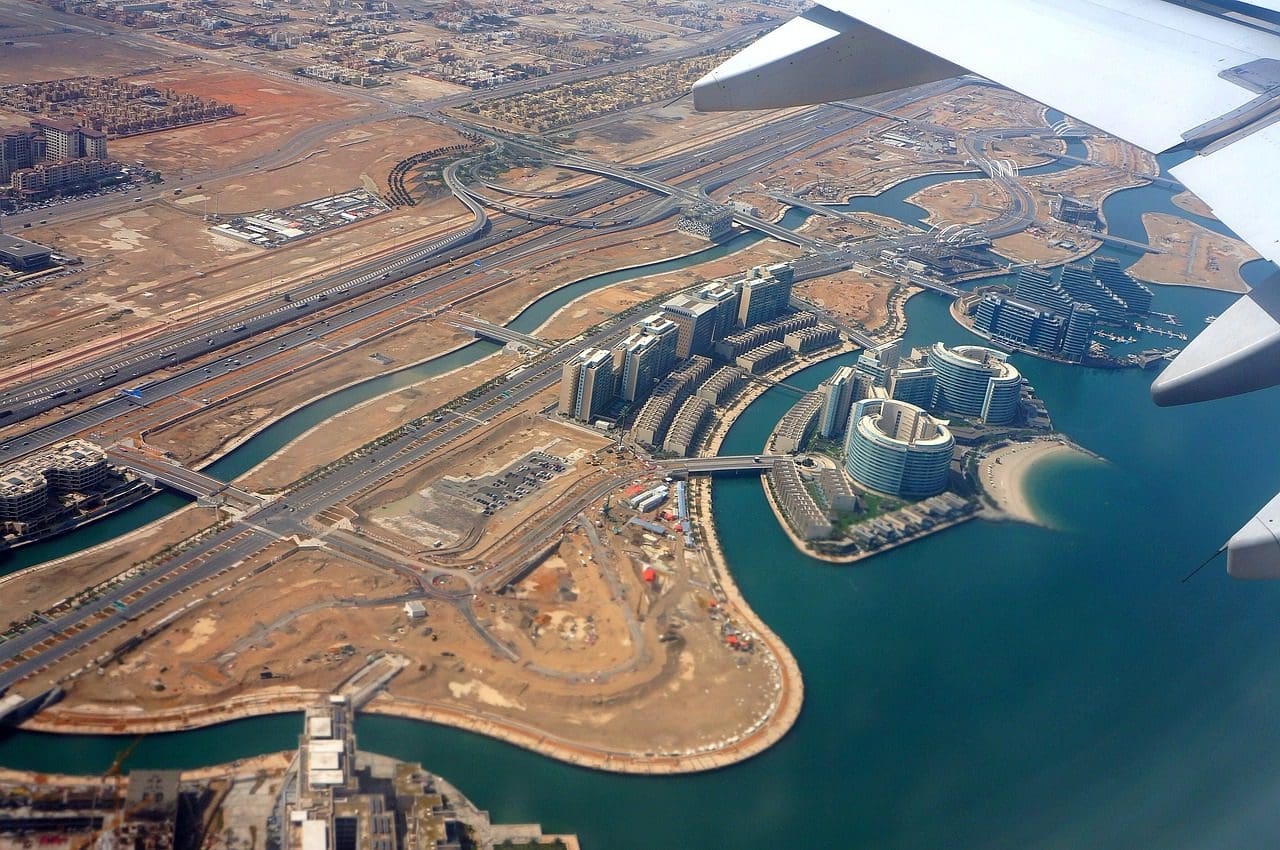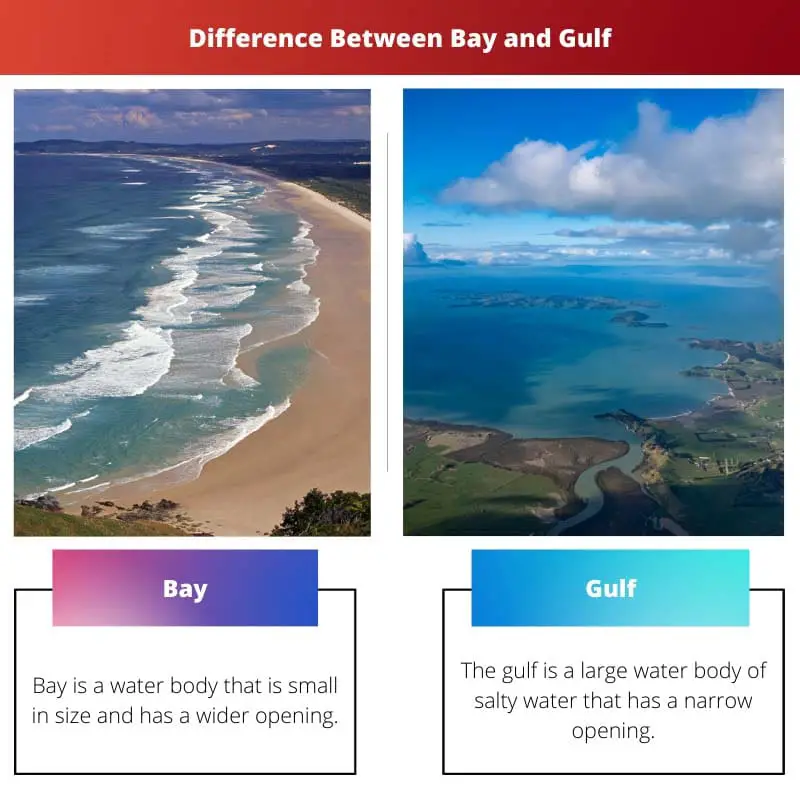A Bay is a kind of water body that is partially surrounded by land and opens up in a wider form.
A Bay is a small water body with a round shape and wide opening, and a Gulf is a large water body, entirely covered with land and has a narrow opening sometimes. It can also be considered as a large form of bay.
Key Takeaways
- Bays are smaller, semi-enclosed bodies of water connected to a larger body, while gulfs are larger indentations of the coastline.
- Bays have calmer waters and are well-suited for harbors, whereas gulfs can have rougher waters and are less protected.
- Various geological processes, such as erosion, tectonic activity, and glaciation, can form bays and gulfs.
Bay vs Gulf
A bay is a body of water that is partially enclosed by land, with a small opening to the ocean. It is small and can be formed by erosion or glaciation. A gulf is a large body of water that is partially enclosed by land, with a wide opening to the ocean. It is formed by tectonic movements or erosion.

A Bay, as we have mentioned above, is a small water body and a part of the sea or ocean entering a land that has an inward curve.
The main reason behind the formation of bays is Plate Tectonics or when the ocean overflows. In this process, Tectonic Plates drift gradually and move apart, forming other landforms.
The Gulf is a large saltwater body with a narrow opening. The size of the opening may vary sometimes, Gulf is entirely surrounded by land and is connected to the ocean through a narrow passage called straits.
One may confuse bay and gulf with each other as bays sometimes appear to be large in different areas due to some reason.
Comparison Table
| Parameters of Comparison | Bay | Gulf |
|---|---|---|
| Meaning | A Bay is a water body that is small in size and has a wider opening. | The gulf is a large body of salty water with a narrow opening. |
| Process | A Bay is formed by plate tectonics and when the ocean overflows a coastline. | The gulf is formed by the process of Plate Tectonics and Subduction. |
| Effect on nature | Reduces the power of winds and terminates waves. The Bay is home to 120 species of fish. | Gulf contains deposits of oil. Also, have an excellent aquatic ecosystem. |
| Example | Bay of Bengal. | The Gulf of Mexico. |
What is Bay?
A Bay is a small water body. As you have read above, the reason for the formation of the Bay and its specifications, let us recap all the facts mentioned above.
A Bay is a part of the sea, oceans, and lakes and is attached to these water bodies, sometimes on the artificially made river mouth. Generally arises from the process of plate tectonics and ocean overflowing over a coastline.
The Bay of Bengal is the biggest example of a Bay and is the largest bay, even larger than the world’s largest Gulf. Other examples of Bays are Hudson Bay, Kowloon Bay, New York Bay, Georgian Bay, etc.
The Ecosystem of the Bay is very diverse, with bays that are open to Oceans and even include marine habitats. The greatest example is Walker Bay, where you can also find Marine Mammals like eels and whales.
A Bay has vast aquatic ecosystems with over 120 species of fish, resulting in an advantageous effect on our nature.
Most of the Bays contain brackish water. Brackish water is much saltier than freshwater, in general, it is a mixture of both, saltwater and freshwater. While some Bays are made up of only freshwater, providing a home for freshwater habitats.

What is a Gulf?
The Gulf is a more extensive water body than the Bay but has a narrow opening and is even wholly surrounded by land. Gulfs are formed by the process of plate tectonics or by the process of subduction.
Subduction is a process where one tectonic plate goes under another plate and merges into the earth’s mantle, creating a gulf. Gulfs are vaster than Bays and even support ships to dock.
Gulfs are impressive regarding trading, as many Gulfs landed great trading centres. The Gulf of Mexico is the largest Gulf in the World, having a coastline of about 5000 kilometres.
The Gulf of Mexico is one of the major economic plat. This gulf is the primary source for the process of upwelling.
In this process, the mineral-rich water is taken from the depth of the water to the surface. But because of its warm water, it lays a reason for storms that can harm the living surrounding the Gulf.
The Persian Gulf emerges as the second most important Gulf, containing vast petroleum deposits in the Arabian region that Iran lines, Iraq, Kuwait, Saudi Arabia, Qatar, Oman, Bahrain, and The United Arab Emirates that are also incorporated in, The Gulf Cooperation Council Countries.
This Gulf plays a significant role in trade for Middle Eastern Countries.

Main Differences Between Bay and Gulf
- The size, shape, and depth make them different from each other. A Bay is smaller in size and has a wide opening, while the Gulf is larger and has a narrow opening.
- Gulfs are made up of salty water. On the other hand, Bay contains both salty and freshwater; in some areas, Bays are only made up of freshwater.
- Bays don’t cause any damage to nature or the living surrounding the area, but the Gulf can lead to several destructions due to chemical wastes dumped into Gulfs and can even cause storms and hurricanes.
- Gulfs are wholly surrounded by land, while Bays are partially surrounded by land.
- The process of formation of Bays differs from each other. Bays are formed through the process of plate tectonics and ocean overflowing and tidal erosion, while on the other side, Gulfs are formed through the process of plate tectonics and Subduction.
